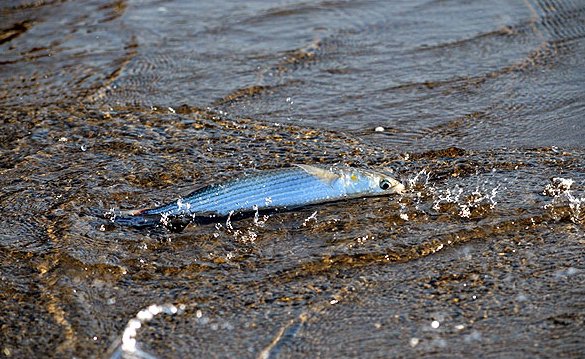
Iran’s Department of Environment is looking for the main culprit in the death of tens of thousands of fish in Khor Musa Channel in the Persian Gulf. In September, toxic material including mercury and other elements poured into this water artery and caused the death of at least 20,000 fish. The sudden death of these aquatic creatures has triggered concern about an environmental crisis in the region.
Khor Mousa Channel branches inland from the Persian Gulf. North of Khor Musa lies Port Imam Khomeini and a petrochemical region. With an average depth of between 20 to 50 metres, Khor Musa is home to a variety of aquatic creatures and birds. In some places, this stream flows as deep as 70 metres and, therefore, many ships can travel along it. The economy of many of the local people is dependent on fishing on this waterway.
The main reason for the death of the fish has been identified as the transfer of toxic material from the Port Imam Petrochemical Complex into Khor Musa. In the first days of the incident, the Khuzestan Department of Environment announced that, in an unprecedented move, the Port Imam Petrochemical Complex had discharged hazardous chemical products into the northwestern coast of the Persian Gulf, and they have leaked into the water. The products are said to include mercury and styrene.
Styrene is a highly toxic organic compound used in the production of plastic and polystyrene and it is highly inflammable and even explosive. Mercury also has very hazardous and toxic compounds, and when they are stored in the bodies of fish, they enter into the human food chain.
The head of the Khuzestan Department of Environment has announced that it is pursuing this matter through legal channels. He added that the Port Imam Petrochemical Complex has a history of neglecting its environmental commitments and the DOE is determined to shut it down through legal channels if it persists in such violations. The report indicates that the Port Imam Petrochemical Complex previously had promised to stop using mercury in some of its products and update its processes with more modern methods. The discharge of toxic material by this complex has killed local wildlife in the past.
Officials of the Port Imam Petrochemical Complex deny responsibility for the widespread pollution in Khor Musa and say  that the death of the aquatic creature is not related to styrene and mercury. They claim expert tests and studies show that styrene and mercury leakage from their complex was not the cause of the fish dying and the Department of Environment must search for the real cause. They claim that the level of leaked styrene is below 50 milligrams per kg, which is not very harmful. They claim the death of the aquatic creatures occurred one hour before these toxins entered the water, according to their research. The complex officials claim the DOE is misleading public perceptions and should show greater scientific accuracy in its findings.
that the death of the aquatic creature is not related to styrene and mercury. They claim expert tests and studies show that styrene and mercury leakage from their complex was not the cause of the fish dying and the Department of Environment must search for the real cause. They claim that the level of leaked styrene is below 50 milligrams per kg, which is not very harmful. They claim the death of the aquatic creatures occurred one hour before these toxins entered the water, according to their research. The complex officials claim the DOE is misleading public perceptions and should show greater scientific accuracy in its findings.
The Department of Environment emphasizes that it has sufficient evidence to prove that the Imam Petrochemical Complex is at fault. It claims the petrochemical wastewater output from the complex has been tested and revealed a sudden surge of toxic styrene and alkaline material, which has caused the death of 20,000 aquatic creatures.
The DOE says it is aware that petrochemical facilities sometimes make an emergency discharge of large quantities of chemicals to avoid fires. It claims, however, that such emergency procedures require them to have adequate drainage basins for such occasions in order to prevent leakage of the material into the environment.
However, the Port Imam Petrochemical Complex does not have such basins and, therefore, it ends up discharging these materials directly into the surrounding environment, where it easily leaks into the sea.
The Port Imam Petrochemical Complex is one of the largest petrochemical complexes in the country, and one has to ask why the DOE has not yet been able to force this industrial giant to follow environmental regulations?
Currently, the case of widespread pollution in Khor Musa region is being dealt with at the Mahshahr Justice Department.
[translated from the Persian original]








